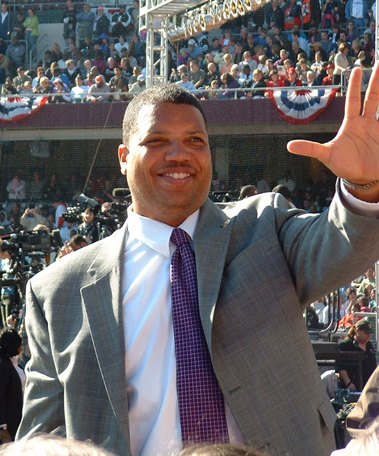I’m sure Sarah Palin somewhere has a list of points she is determined to make in every speech she gives. This list of talking points was derived from a transcript printed in the Chicago Sun Times of a stump speech that Palin gave this past Monday in Clearwater Florida.
- In politics there are some candidates who use change to just promote their careers. And then there are those leaders, like John McCain, who use their career to promote change.
- John McCain is his own man. He doesn’t run with the Washington herd. And he and I don’t just talk about change, we’re the only candidates in this race with a track record of actually making change happen.
- The people, our families, our businesses they know best so let them keep more of what they earn and produce and not have this government take trying to quote, “solve” all the problems for our families and our businesses.
- And we’re also going to bring tax relief to every American and cut taxes for businesses so you business owners you can hire more people. That’s how jobs are created.
- The phoniest claim in a campaign that’s been full of them, is that Barack Obama is going to cut your taxes. He’s built his whole career on doling out tax money, first as a Chicago politician, and then raising taxes as a senator. He’s voted 94 times to raise taxes.
- Even on middle class every day working Americans making $42,000 a year, he voted to raise those taxes. And he tried to waste a million dollars a day just on his requested earmarks. And now, he’s committed to almost a trillion dollars in new government spending. And yet, he never bothers to explain where all that’s going to come from to pay for all of that. And dog gone it, no one seems to be asking him how is he going to pay for the huge government growth that he wants. No one is asking him. So you all, just do the math. Either do the math or just go with your gut. In either way, you’re going to come up with the same conclusion, Barack Obama is going to raise your taxes.
- So, there’s a pattern here of a left-wing agenda that is packaged and prettied up to look like mainstream policies. And everybody knows that this country has got to be put back on the right track. But the problem with our opponent’s agenda is that higher taxes and bigger government and activist courts and retreat in war, that’s not the right track for our country. That’s another dead end.
- One of his earliest supporters is a man named Bill Ayers. And according to the New York Times he was a domestic terrorist and part of a group that quote, “launched a campaign of bombings that would target the Pentagon and our U.S. Capitol.”
- And then there’s even more to the story. Barack Obama says that Ayers was just someone in the neighborhood, but that’s less than truthful. His own top adviser said that they were quote, “certainly friendly.” In fact, Obama held one of his first meetings of his political career in Bill Ayers living room. And they worked together on various projects in Chicago. And, you know, these are the same guys who think that patriotism is paying higher taxes.
- I am just so fearful that this is not a man who sees America the way that you and I see America, as the greatest source for good in this world. I’m afraid this is someone who sees America as imperfect enough to work with a former domestic terrorist who had targeted his own country.
- There is only one man in this campaign who has ever really fought for you. … He has the courage to go on fighting for you. That man is John McCain so God bless you for supporting John McCain.



























